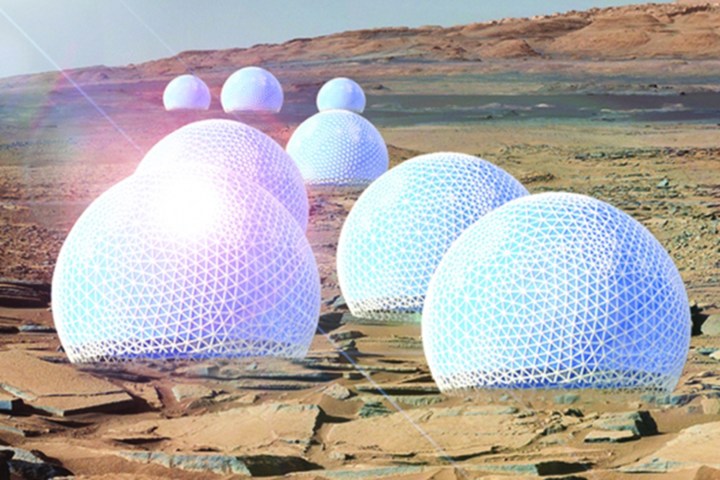
Now we have a vision of what life on Mars might look like, thanks to a team of urban designers at the Massachusetts Institute of Technology, whose “Redwood Forest” habitats won the Mars City Design 2017 in architecture.
The immense domed greenhouse is designed to shelter 50 people, equipped with open spaces of plants and water harvested from the Martian plains, in a community of 10,000. Beneath the domes, tunnels intertwine like tree roots, offering private quarters and underground routes to other nearby habitats.
“On Mars, our city will physically and functionally mimic a forest, using local Martian resources such as ice and water, regolith (or soil), and sun to support life,” Valentina Sumini, an MIT postdoc who spearheaded the project, said. “Designing a forest also symbolizes the potential for outward growth as nature spreads across the Martian landscape. Each tree habitat incorporates a branching structural system and an inflated membrane enclosure, anchored by tunneling roots.”
In addition to providing access to nearby communities, the underground network offers residents protection from space dangers such as cosmic radiation, micrometeorites, and extreme changes in temperature.
Water is key to life on Earth and it will be key to developing sustainable communities on Mars.
“Every tree habitat in Redwood Forest will collect energy from the sun and use it to process and transport the water throughout the tree, and every tree is designed as a water-rich environment,” George Lordos, an MIT doctoral student who led development of the Redwood Forest’s system architecture, said. “Water fills the soft cells inside the dome, providing protection from radiation, helps manage heat loads, and supplies hydroponic farms for growing fish and greens. Solar panels produce energy to split the stored water for the production of rocket fuel, oxygen, and for charging hydrogen fuel cells, which are necessary to power long-range vehicles as well as provide backup energy storage in case of dust storms.”
Although the Redwood Forest was designed with Mars in mind, it features technologies familiar to us on Earth and valuable for our sustainable future. For example, electric vehicles and hydroponic gardens are each essential to the plan. Similar lush structures may also provide alternative shelter for people in harsh environments, from deserts to mountaintops. Life on the Red Planet is beginning to look a lot greener.



